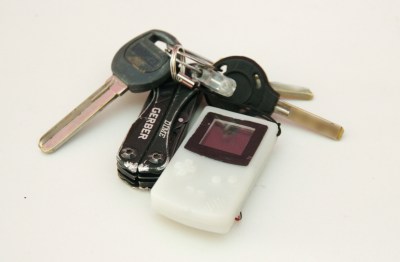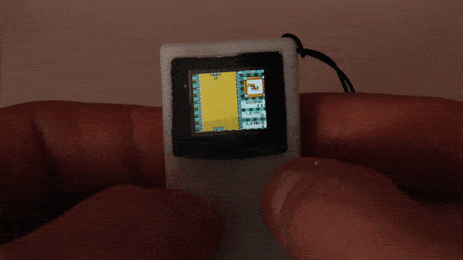This is likely the world’s smallest fully-functional Game Boy Color, able to play all of the games using the tiny direction pad and buttons, with onboard display and battery and in the original form factor. This is an incredible hack which presents a tour de force in hardware and software. This will easily rank in the top five hacks you’ve seen this year.
 I’m sure that many of you have fond memories of your first handheld games. This will be Game Boy for most, and we admit they had fairly decent portability and battery life that puts many smart phones to shame. Despite this, Sprite_TM always dreamed of an eminently more portable version and to his adolescent delight he discovered a key chain version of the Game Boy. Unfortunately, he was duped. The keychain looked like a Game Boy but only functioned as a clock.
I’m sure that many of you have fond memories of your first handheld games. This will be Game Boy for most, and we admit they had fairly decent portability and battery life that puts many smart phones to shame. Despite this, Sprite_TM always dreamed of an eminently more portable version and to his adolescent delight he discovered a key chain version of the Game Boy. Unfortunately, he was duped. The keychain looked like a Game Boy but only functioned as a clock.
But now, decades later, technology has progressed as have his own skills. For his talk at the 2016 Hackaday SuperConference, Sprite_TM actually built his childhood dream.














